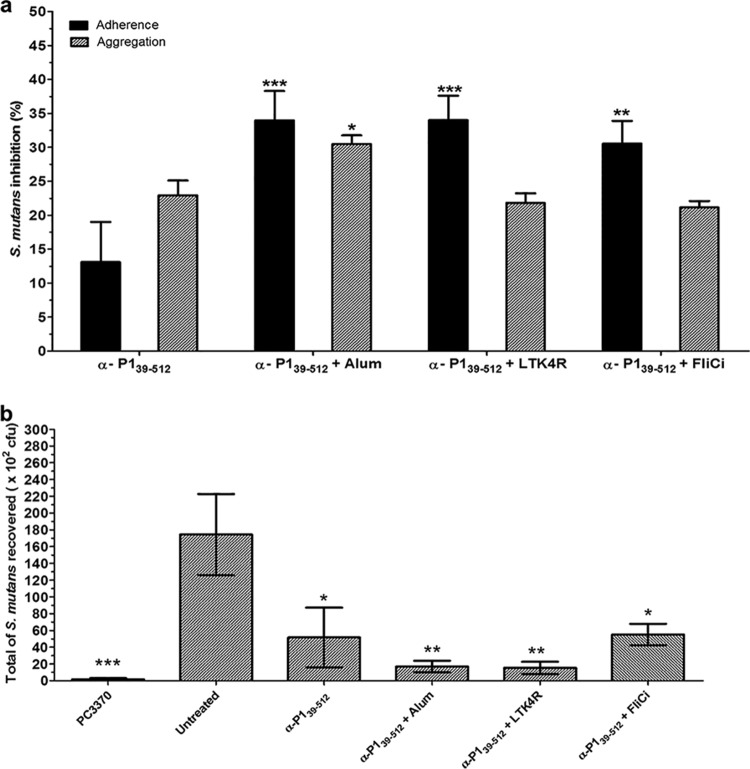FIG 5.
Blockage of the adhesive functions of S. mutans with anti-P139–512 antibodies. (a) Inhibition of SAG-mediated adhesion and aggregation of S. mutans cells by anti-P139–512 antibodies. Determination of adherence inhibition was carried out by surface plasmon resonance analysis. The percentage of adherence inhibition by immune serum samples from the indicated groups was determined by using the values obtained for S. mutans without serum as the reference. The percentage of inhibition of bacterial aggregation was calculated after incubation for 1 h in the presence of fluid-phase SAG and immune serum in comparison to S. mutans cells incubated without serum. Nonimmune mouse serum was used as a negative control, and the values were subtracted as the background. The results are based on data from at least in two independently performed experiments, and data represent means ± SEM. Statistically significant differences were determined in comparison to serum samples from mice immunized with P139–512 without adjuvant. (b) Inhibition of initial colonization of murine tooth surfaces with S. mutans by anti-P139–512 antibodies. BALB/c mice were pretreated with human saliva and then inoculated with S. mutans NG8 cells previously incubated with sera from mice immunized with P139–512 with and without adjuvants. Tooth swabs were collected 6 h after inoculation and plated onto Mitis-Salivarius medium plates containing bacitracin (0.2 U/ml) and sucrose (5%). S. mutans without preincubation with serum (untreated) and a P1-deficient mutant strain (PC3370) were used as positive and negative controls, respectively. Assays were performed with serum samples collected after the third dose. All sera were diluted 1/100. Data are expressed as the means ± SEM. Statistically significant differences were determined in comparison to the untreated group (*, P < 0.05; **, P < 0.01; ***, P < 0.001).

